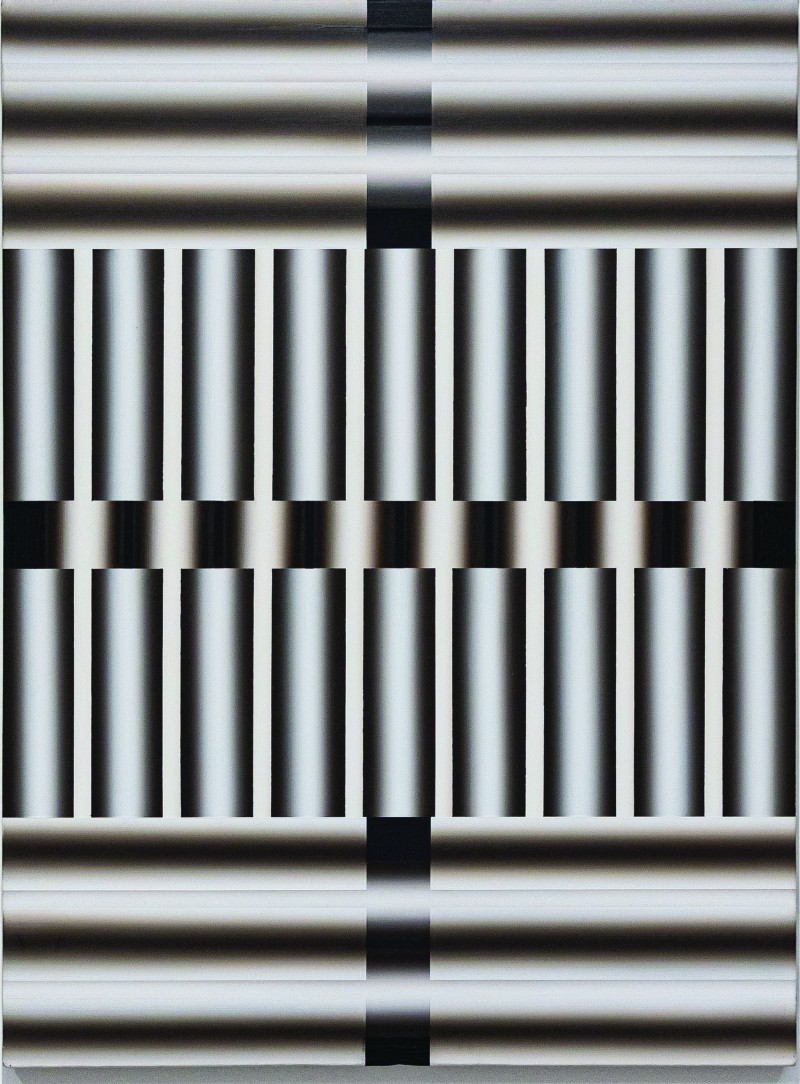Lee Seung Jio
A pioneer of Korean geometric abstract painting, Lee Seung Jio (1941-1990, Korean) occupies an unparalleled position in the history of Korean modern art. With the debut of his trademark series Nucleus in 1967, he paved the way for Korean geometric abstractionism and thereafter rigorously formulated a unique and original formal language in an unceasing manner for over 20 years before his early death. Since the latter half of the 1970s, Lee expanded his artistic oeuvre in relation to the Dansaekhwa movement, pursuing monochrome paintings of neutral colors and adopting Korean traditional paper, hanji, as an artistic medium. Characterized by cylindrical forms reminiscent of “pipes,” his paintings not only symbolize modern civilization but also challenge the notion of opticality, evoking a sensory illusion that oscillates between the two-dimensional flatness and three-dimensional structure as well as the abstract and the figurative. Sharing the title of “Nucleus”—meaning core—Lee’s works are a crystallization of his life-long contemplation and pursuit of the truly pictorial, demonstrating the essence of modernist abstract painting. His works are in the collection of prominent institutions worldwide, including The Museum of Modern Art, New York; National Museum of Modern and Contemporary Art, Korea; Seoul Museum of Art, Seoul; Leeum Museum of Art, Seoul; and Deutsche Bank, Seoul, among others.
이승조는 한국의 기하학적 추상회화를 선도한 화가로, 모더니즘 미술의 전개 과정에서 독보적인 위치를 점한다. 1967년 처음 선보인 〈핵〉 연작으로 기하추상 화풍의 신호탄을 쏘아 올렸고, 이후 작고하기까지 20여 년간 일관되게 특유의 조형 질서를 정립하는 데에 매진했다. 특히 1970년대 후반부터는 무채색의 전면회화를 전개하거나 한지와 같은 재료를 도입하는 등 단색화 움직임과의 연계성 속에 작업 세계를 확장해 나갔다. 파이프를 연상시키는 원기둥 구조를 근간으로 하는 이승조의 회화는 현대문명을 상징하는 동시에 평면성과 입체성, 추상과 구상을 넘나드는 환영감을 불러일으키며 시각성의 문제를 제기한다. 물질의 기본 요소를 의미하는 ‘핵’으로 명명된 이승조의 작품은 순수하게 회화적인 것에 대한 작가의 심도 깊은 고찰의 응결체로써 모더니즘 추상회화의 본질을 드러낸다. 이승조 작품의 주요 소장처로는 국립현대미술관, 서울시립미술관, 리움미술관, 토탈미술관, 도이치은행 등이 있다.

